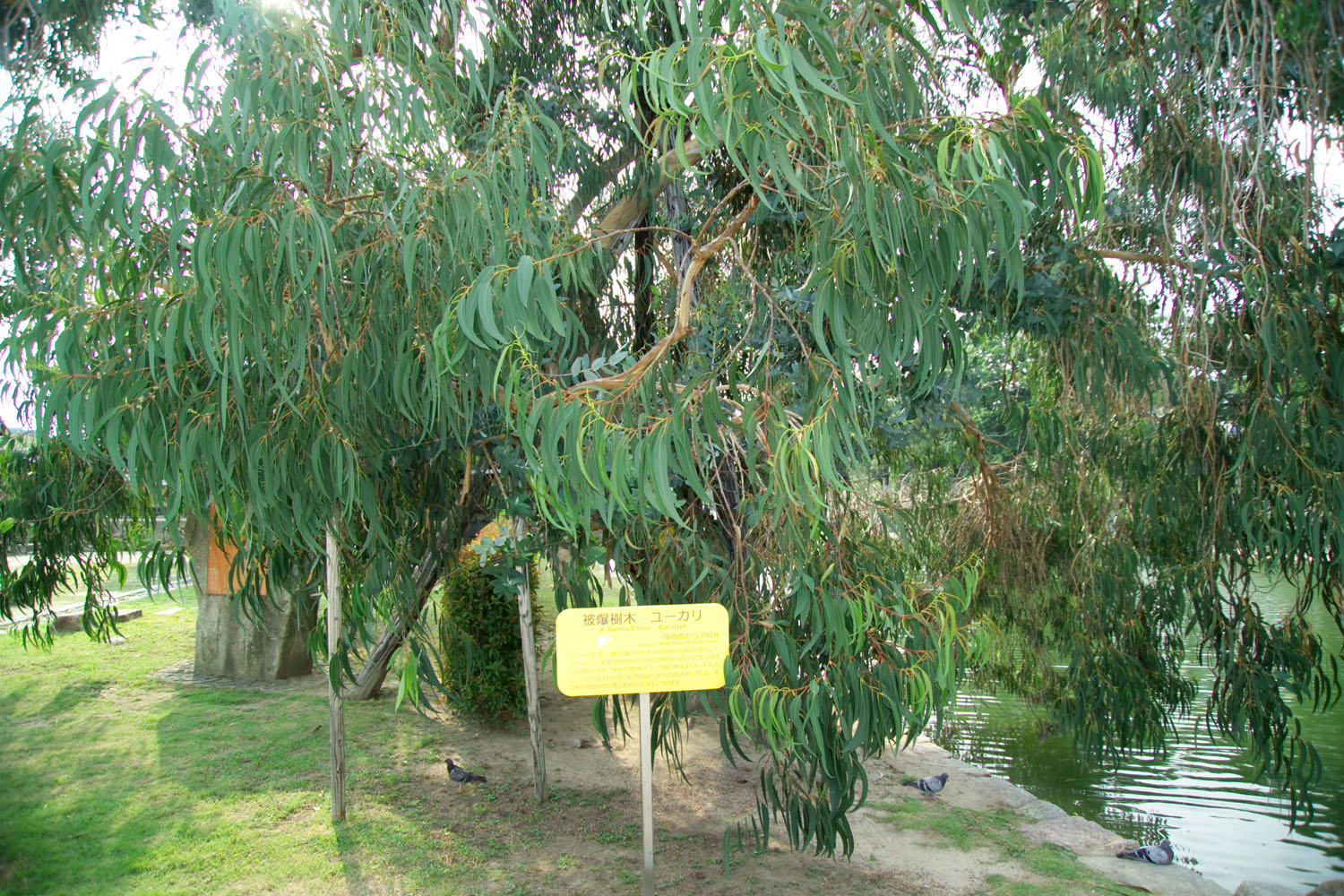When an atomic bomb was dropped on Hiroshima in the last days of World War Two, much of the city’s life was eviscerated. Around 140,000 people were killed and over 60,000 buildings were destroyed or damaged in a moment. Amid the rubble and ruins, however, glimmers of life held on. Against the odds, several trees managed to survive in the heart of Hiroshima, persisting like silent witnesses to the horrors of nuclear weapons.
In a grassy park along the Honkawa River in Naka-ku district, you can find a weeping willow (Salix babylonica) that was planted long before the Second World War.
It’s located just 370 meters (1,213 away) from the focal point of the bomb, the unusual T-shaped Aioi Bridge which was chosen as a target because of its distinctive appearance from the skies. Although the willow’s trunk was broken in the bomb blast of Little Boy, it still survives today and even hosts new shoots that have since grown from the base.
We know much of this information thanks to the Green Legacy Hiroshima, a group of citizens, scientists, and politicians that celebrate the numerous trees that survived the atomic bombing of the city. By documenting their presence, they hope to make a statement against war and nuclear weapons, as well as the persisting beauty of nature.
A decades-old eucalyptus tree at the site of Hiroshima Castle, 740 meters (2,427 feet) from the atomic bomb’s hypocenter. The tree survived, the castle did not.
“I realized that trees are incredibly important, as they can be used to bring things together and raise a variety of issues, including the history and the natural environment, rejection of war, and hopes for the abolition of nuclear weapons,” said Dr Nassrine Azimi, senior advisor at the United Nations Institute for Training and Research who co-founded the Green Legacy Hiroshima with Tomoko Watanabe, according to Hiroshima for Global Peace.
“Trees watch over the way we live — they remember everything that has happened up to the present, and share it all with us in the form of a message,” explained Dr Azimi.
The surviving trees are known as hibakujumoku, stemming from the Japanese words hibaku, meaning “A-bombed, nuked,” and jumoku, meaning “trees and shrubs.”
The organization keeps a live list of 62 hibakujumoku located in Hiroshima. Along with plenty of weeping willows, it includes a host of other species such as giant Camphor trees, fruit-bearing Japanese Persimmon trees, Eucalyptus, and the iconic Yoshino Cherry.
A similar initiative has blossomed in Nagasaki, the other Japanese city that the US struck with an atomic bomb in August 1945. Known as the Nagasaki Kusunoki Project, the group says there are at least 50 hibakujumoku within a 4-kilometer (2.4-mile) radius of the bomb’s hypocenter.
Many of the survivors feature traumatic scars from the bomb blast, the resulting flames, or the radioactive fallout that riddled the city. Nevertheless, they’re still standing as proud as ever.
Trees are relatively resilient to radiation. Hardy tree species such as poplar can endure up to 50 Gy with little trouble, whereas humans can die from doses in the single digits. Sensitive species might perish or experience problems with tree growth, but certain types of trees have a remarkable ability to withstand fallout.
Another part of the Green Legacy Hiroshima‘s mission involves sending seeds and saplings of hibakujumoku to other parts of the world, including the US and the UK. They estimated that descendants of the A-bombed trees are currently growing in at least 40 countries across the planet, spreading a message of hope and peace.
Source Link: Trees That Survived The Atomic Bomb In Hiroshima Spread A Message Of Peace
